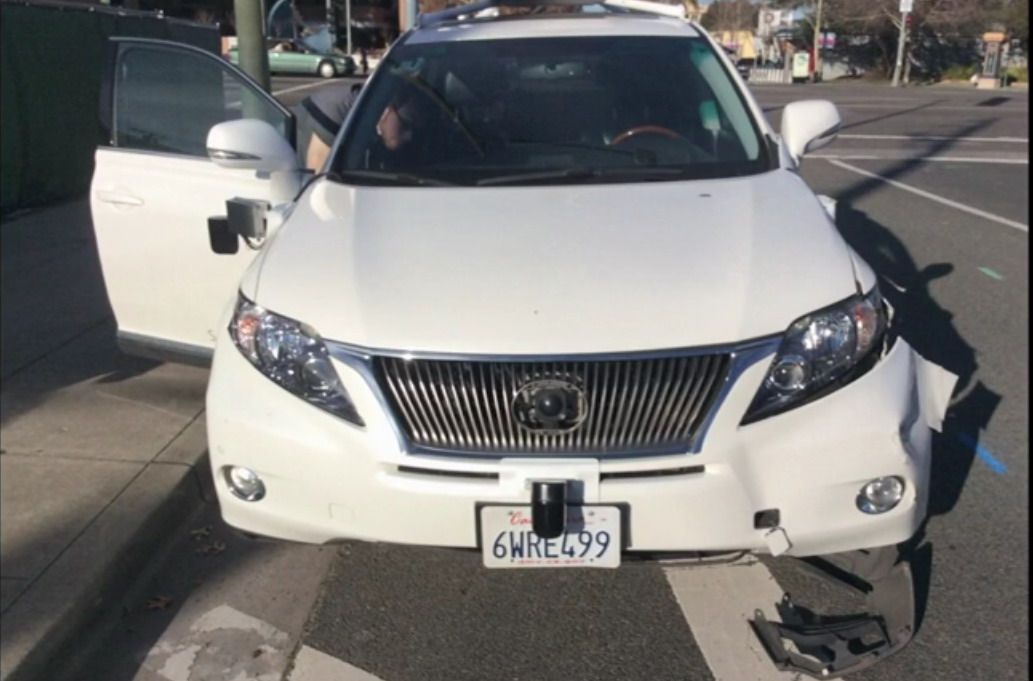One of Google’s self-driving vehicles, in this case a Lexus RX,->ke496 figured into an accident with a transit bus last February 14, 2016 in Mountain View, California. Ironically, the crash->ke277 occurred within a cartwheel’s distance of the tech giant’s headquarters.
The crash occurred when the autonomous->ke5282 SUV attempted to switch lanes to avoid some sand bags, incorrectly assuming that the bus approaching from behind would either slow down or stop completely to let the car make the lane switch. Neither ended up happening and the RX smacked right into the side of the bus. The RX ended up damaging its front fender, wheel, and a self-driving sensor.
Thankfully, the crash happened at low speeds – the autonomous SUV->ke145 was angling towards the center lane at two mph while the bus was traveling at 15 mph. Nobody was hurt from the accident and all the passengers of the bus were transferred to a new bus to continue their commute.
Google has since released a statement, saying that it shouldered “some responsibility” for the accident, saying that it could’ve avoided the ordeal entirely if it had just waited for the bus to pass before making the lane switch. That said, it also chalked up the incident to a simple “misunderstanding” that happens routinely on the road every day in all parts of the world.
Since the accident, Google also said that it had reviewed the incident and has made important refinements to its software so that its cars have a clearer understanding of the behavior of public transit vehicles in cases like the one it was involved in.
Continue after the jump to read the full story.
Why it matters
On the surface, this accident doesn’t seem like that big of a deal considering that it happens nearly every day with real drivers behind the wheel. Google even pointed that out in its statement. That’s fine and all, but the incident also highlights one of the skepticism behind autonomous driving technology. In a perfect world, this tech has the makings to be a ground-breaking evolution in the auto industry. But we don’t live in a perfect world. Mistakes happen everyday, especially when it comes to drivers who have to navigate in and around a multitude of traffic conditions on a daily basis. This accident just happened to have been caused by a computer.
There’s a snickery element to that, but on a more serious note, this incident shows how far the technology still is before it becomes readily available for production use. Give credit to Google for taking the blame here (or at least part of the blame), but it’s one thing to admit that it was at fault; it’s another thing to make the necessary software improvements to make sure that it’s computer will be able to better recognize its surroundings, especially when it comes to the driving patterns of other drivers.
See, as evolved as autonomous driving is today, it still can’t map out in algorithms the behaviors of other drivers on the road. Some are naturally cautious while others are reckless beyond reason. Autonomously driven cars rely on its surroundings to make decisions on the road. That’s great, but does it have – or will it ever have – a software that can predict a driver’s intentions, or in some cases, state of being?
The crash that Google’s RX SUV caused is a stark reminder that there’s still a lot to be learned by Google and every automaker that is currently developing its own autonomous driving technology. If this technology does have the kind of benefits these companies believe it has, then shouldn't it have no cases of seemingly trivial accidents on its ledger?

